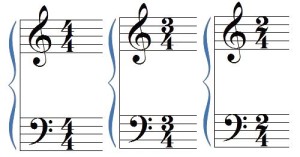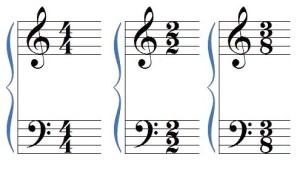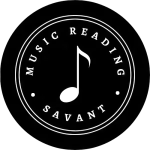| This reading music lesson is a supplement to the Alfred’s Essentials of Music Theory self-study workbook. While no book is perfect for learning how to read music, this is one of the best available. The concise explanations, brief practice exercises, ear-training CD’s, glossary of music terms, and answer key make it an excellent value. Buy this top-rated self-study course for beginners to advanced musicians and follow along with me. |
The time signature is found right after the clef sign at the very beginning of your music.
The term meter is used interchangeably with time signature and they both mean the same thing.
There are 2 numbers you will find stacked on top of each other.
Top Number
The top number tells us how many beats are in each measure.

Top Number Examples
- A number 4 on top means there are 4 beats in each measure.
- A number 3 on top means there are 3 beats in each measure.
- A number 2 on top means there are 2 beats in each measure.
Bottom Number
The bottom number tells us what type of note will receive 1 beat.

Bottom Number Examples
- The number 4 on the bottom represents a quarter note receiving 1 beat.
- The number 2 on the bottom represents a half note receiving 1 beat.
- The number 8 on the bottom represents an eighth note receiving 1 beat.
(Don’t worry about the eighth note quite yet. We will learn about this a little later.)
With this basic understanding of how time signatures work, we are now ready to learn about the 3 most common time signatures in a little more depth.
